Warhammer: Age of Sigmar: The Rise and Fall of Anvalor — Citadel defence
Since Games Workshop agreed to license its intellectual property to external organisations, we’ve seen a rich and varied mixture of video, board and other games covering every aspect of the worlds of Warhammer. One recent game to take advantage of the Warhammer lore is The Rise & Fall of Anvalor, from Wizkids and Rustan Hakansson.
The Rise & Fall of Anvalor is a semi-cooperative game in which there can be only one winner, but where everyone can lose. The game takes place in the city of Anvalor, which is considered to be a strategically important location that has never been successfully fortified for any length of time.
The players each control one of six factions who are broadly considered to be good and each of them has an interest in controlling Anvalor should it become a permanent fixture. The players will work together to defend the city from numerous waves of enemies that are spawned by the three evil factions, whilst also keeping an eye on their own influence, which must be maximised if possible.

As a semi-cooperative game with competitive scoring, one of the double edged swords in games like The Rise & Fall of Anvalor is the fact that players may determine that they cannot win long before the end of the game. In some games, this can make a player attempt to force a loose state for all players, essentially affording them a draw. This is avoided in The Rise & Fall of Anvalor on the basis that the city is kind of destined to fall, so unlike most “siege Defense” games, there isn’t actually a fail state.
During setup, players will choose the difficulty level (ranging from hard, to ohmyfudginggod hard) and then decide which enemy they wish to fight. The base game (which is all that is currently available) includes classic Warhammer bad guys, Chaos, Orks and Skaven. The players then choose their own factions from the six available, which include various factions, predominantly from the human and dwarf races.
Key to ensuring the replayability of The Rise & Fall of Anvalor is the level of variety among both allied and enemy powers. I was initially (and I suppose still am) a little disappointed to have only three enemies to face down, but I can’t deny how different they are. Fighting the Skaven is very different to facing down Chaos, for example.
More importantly however is the variation in the allied factions, which are all very different to play with, despite there being relatively little choice in terms of races. Of the six factions, five are made up largely of dwarves and humans, with the sixth faction, Order Serpentis, representing the elves. Each of these factions comes with four aspect cards, of which only one will be chosen per game. This essentially allows over twenty different combinations of player faction to choose from and experiment with.
With the large board placed in the centre of the table, The Rise & Fall of Anvalor initially looks a little spartan. This is because the board itself is more or less featureless except for a grid of spaces that can be occupied by building, unit and enemy tiles as the game develops. The board is double sided, with one face to allow one or two players and the other to enable the full three to four player experience.
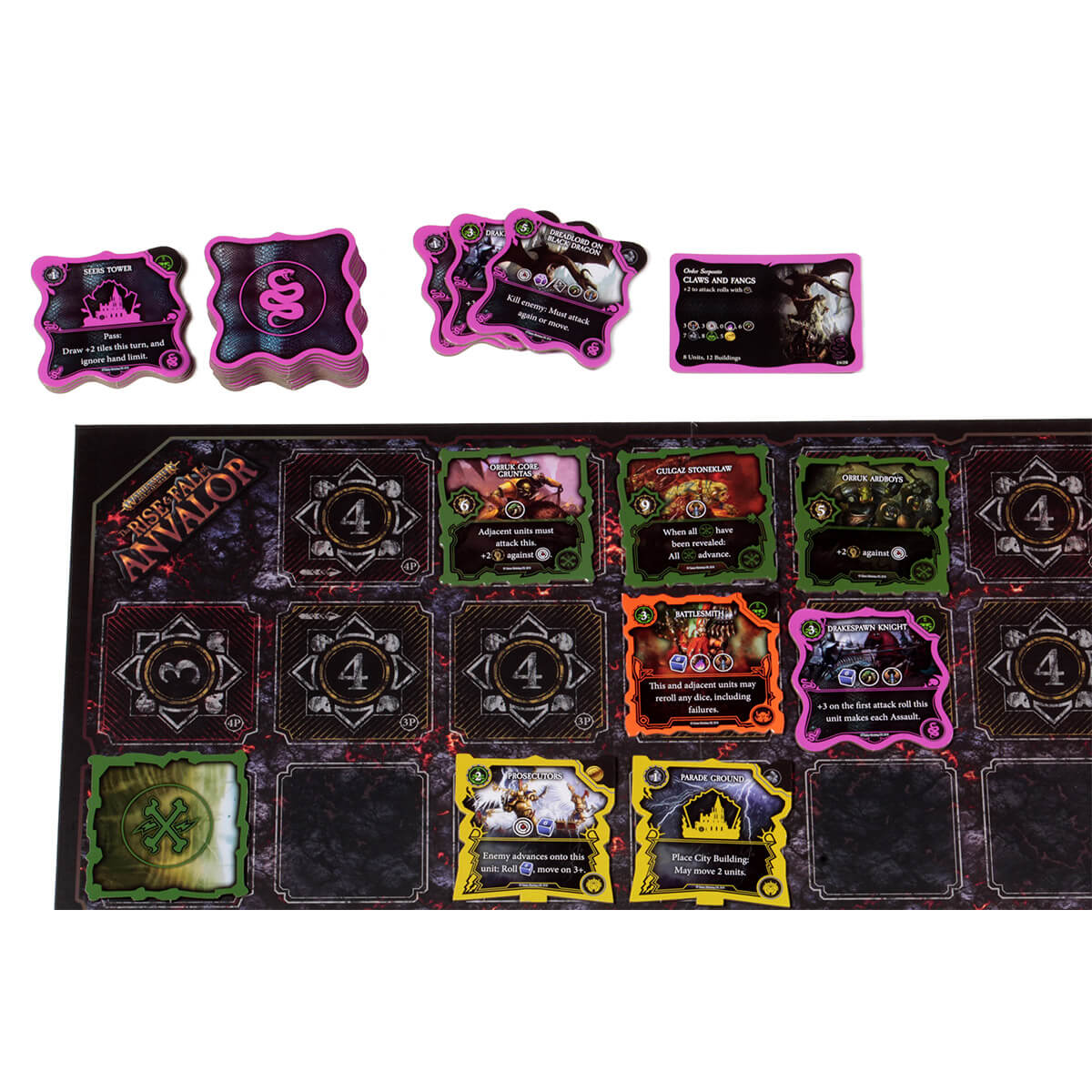
With factions chosen, the players will perform a little bit of setup admin. This mostly relates to arranging the general supply of city building tiles, as well as their own specific unit and building tiles. The players then draw five tiles each (which can be mulliganed once) and the game is ready to begin.
Turns in The Rise & Fall of Anvalor are relatively simple and often pretty quick. The active player has three phases to perform, including taking an action, drawing tiles and then preparing enemy forces. Taking actions is where most of the decisions are made, but there are still only three actions to choose from.
From their hand of five cards, the player can choose to place either a faction unit or building onto the board. If this option is chosen, the player will need to spend resources (manpower, stone, gold, influence) to play it. This is achieved by summing any resources generated by existing tiles and then by adding any resources generated by discarding tiles from hand.
The second action, building a city building, works in the same way, except that the city building is taken from the shared display. The key difference here is that city buildings will almost always provide the player with an influence bonus and affect all players, whereas the faction tiles are unique to that player.
As a result, faction tiles rarely provide influence (since they represent a faction advancing its own power) whilst city buildings benefit everyone. As such, they increase faction influence within the city which represents that faction growing in prominence among its peers. Balancing both personal objectives and overall influence is a key strategy in The Rise & Fall of Anvalor.
As their third choice of action, a player may simply pass their turn, which relates directly to the next step — drawing tiles. If a player had decided to use their action to place a building or unit, then they will draw two new tiles at this point, up to their hand limit of five. If the player passed, then they will draw three tiles instead. There are tiles that affect these numbers — some increasing the hand limit and others allowing more cards to be drawn.
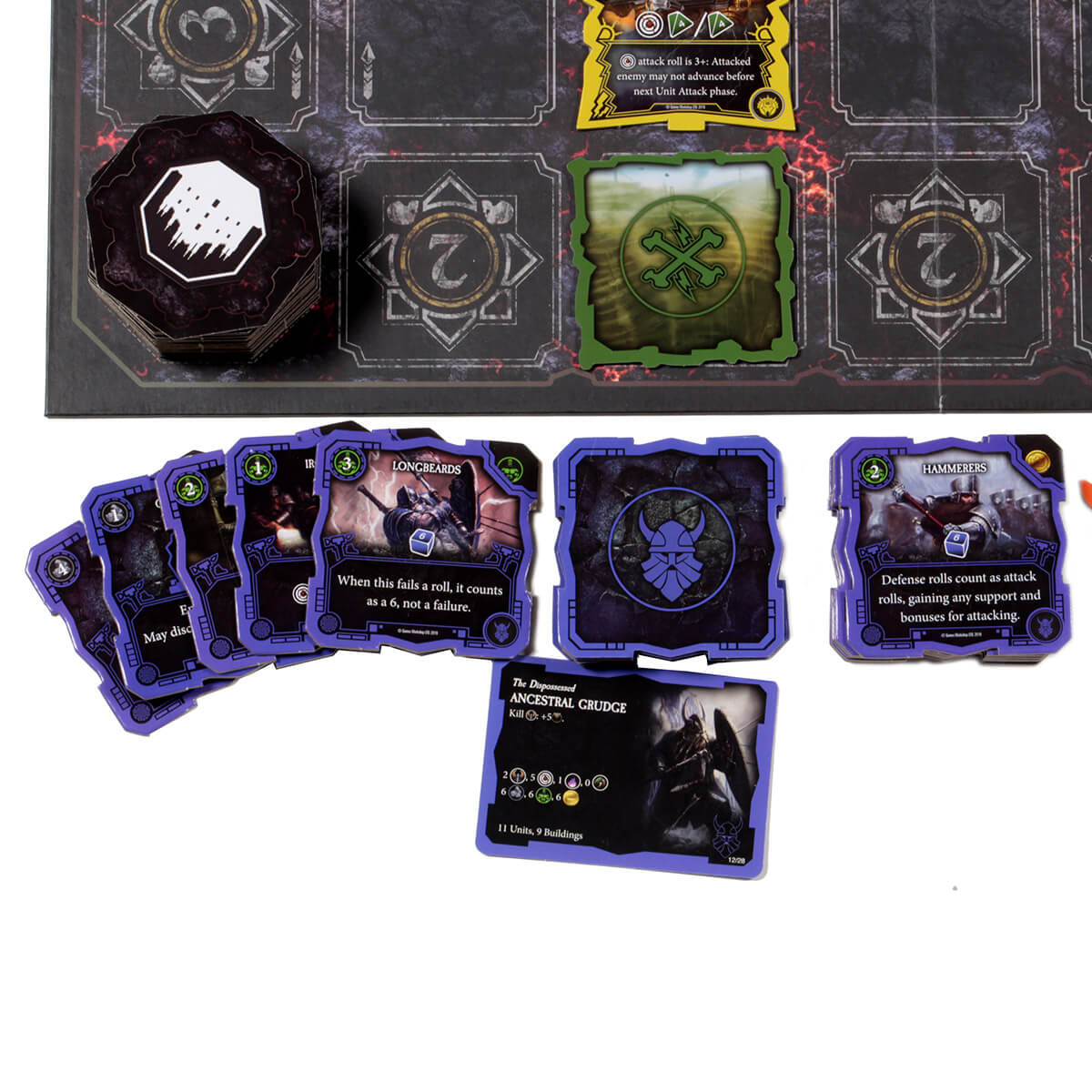
After drawing new cards, the player will then perform the enemy preparation phase. What happens here is directly related to the city buildings market. If there are no empty spaces, then nothing happens. If there is even one empty space, however, then the player will roll a six sided die. On a one to four, the player will place an enemy unit face down onto one of the spaces that matches the number. If a five or six is rolled, then an effect on the enemy faction tile or its associated war cry tile will be triggered.
After this, the player turn officially ends and a couple of checks are performed. Firstly, the player checks whether all spaces of a given number are occupied — if so, then an assault is triggered. On some occasions, the players may fill out the blank spaces on the board with their own buildings and units, at which point an onslaught is triggered instead. When this happens, the players must take turns to roll the D6 until an assault is triggered. In this way, the game can never stall in a position where the players can’t take any action or make progress.
When an assault happens, the players will collectively fight to defend Anvalor based on the units and buildings that have been placed, which will face off against the enemy units that are now flipped face up (only in spaces where the assault has triggered.) These enemies can then be attacked by all adjacent player units, resolved in order of the arrows shown on the board.
Each unit has its own rules for attacking, including both melee and ranged attacks, special abilities, modifiers and so on. Some are excellent in one area and weak in others, whilst as you can probably imagine, some units are fairly average. Attacks are resolved by rolling the dice shown for that unit and comparing the modified dice roll with the enemy strength — equal or greater values destroy the enemy unit, whilst failed attacks don’t do anything.
Defeating enemies by attacking them is probably the most important way of gaining influence. Defeated enemies pay influence equal to their strength, so defeating more powerful foes has its advantages. It’s also important to note that defeating enemies tactically based on their location can prevent other players from being able to attack them, potentially denying them the glory of battle. Once all player attacks are resolved the remaining enemy units advance.
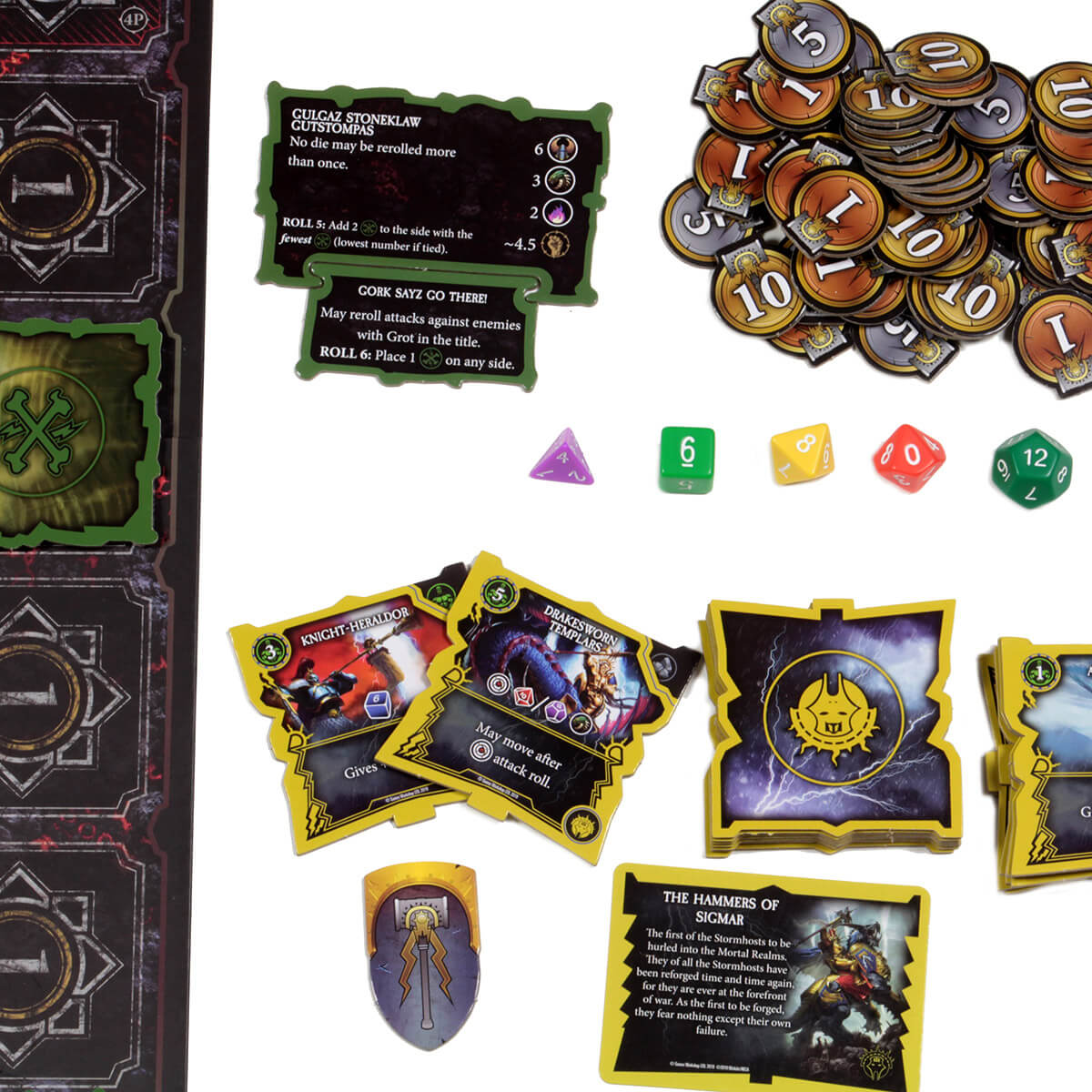
When this happens, each enemy moves one space closer to the opposite edge of the board. If a building is in the space they move to, it is always destroyed immediately. If the space is occupied by a unit, then that unit is attacked. As with resolving attacks, the defending unit rolls a defence die and if the modified roll is less than the enemy strength, in this case, that unit is destroyed.
This process is repeated until any enemies are defeated or until the enemy tiles have moved all the way across the board. When the very last enemy unit is drawn from the pile, the final assault is triggered. The final assault is resolved in the same way as a regular assault, but before the combat starts, the remaining enemy units will be collected onto a single side of the board, enabling one massive wave to form.
At the end of the final assault, the scores are calculated and the player with the most influence wins. In my experience with The Rise & Fall of Anvalor, the scores actually remain fairly even throughout and it’s also fairly difficult to calculate your position in the standings without going through the tiles and influence tokens exhaustively. With this in mind and playing with a casual audience, I’ve found that the action remains fairly tense right until the end.
Having played The Rise & Fall of Anvalor a few times now, I’d say it’s a challenging but fun game that will appeal to Warhammer fans, but might be a harder sell to any other audience. To an extent, I felt like this is because there is no mid-game fail state and no real jeopardy. This takes the edge out of the experience somewhat and turns the feeling of a nail-biting, back to the wall defence and changes it to one of pure score optimisations.
It’s not all bad news though, because efficiency management games do have their place and The Rise & Fall of Anvalor does bring a unique, combat focussed feel to the proceedings. The use of big, bold tiles is also a good choice, since players are able to experience the feel of using some of the more elaborate Warhammer units, without the complexity and cost of having to physically buy, build and paint them.
Constructing units or buildings and placing them on the board is simple, but strategically interesting. Buildings need to be protected, which can be achieved by banking on your own units near them or by placing them tactically behind units controlled by other players in the hope that the other player will attempt to save their own unit, and in turn, your building.
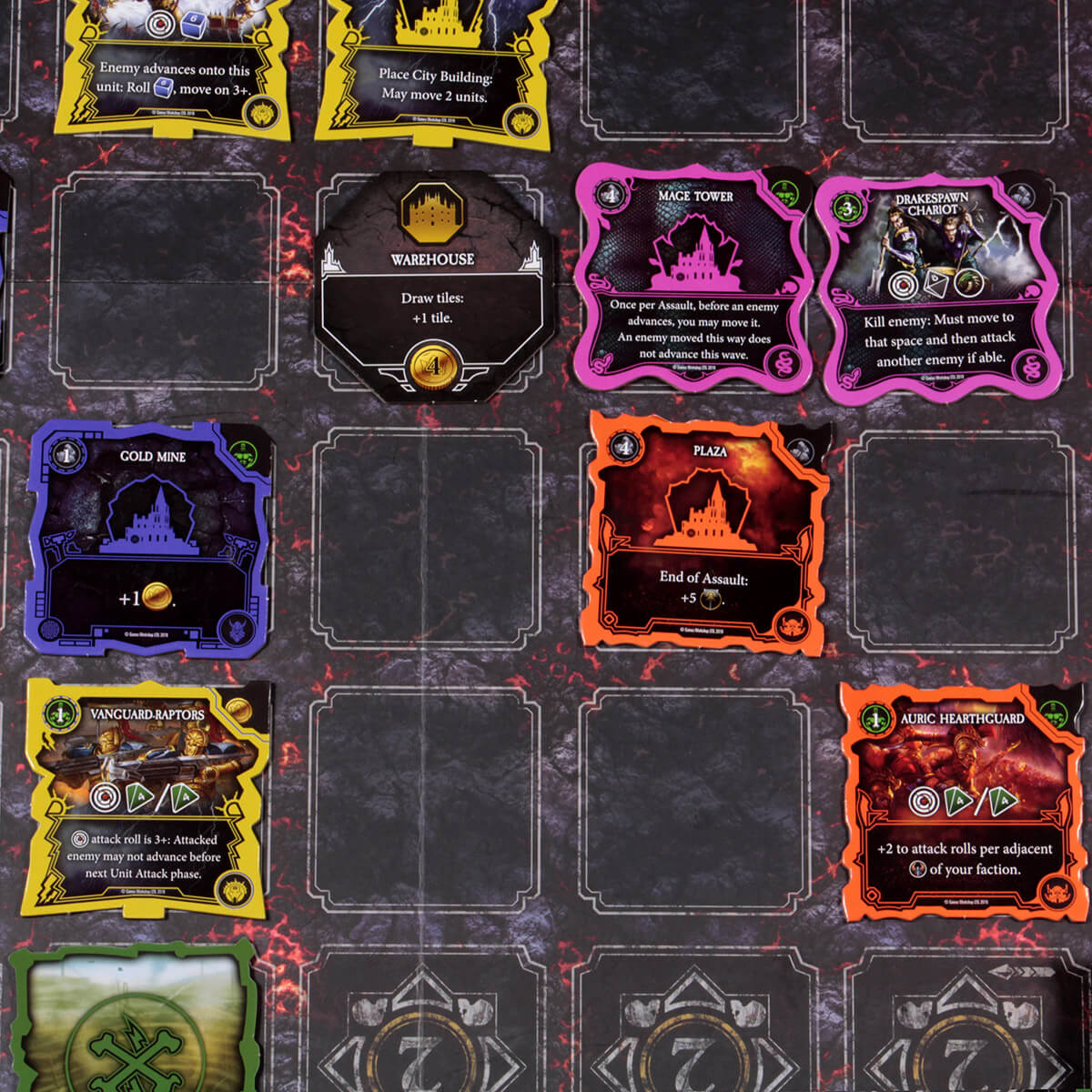
The assault phase is exciting, but heavily driven by the luck of the dice. Most enemies are tough to beat, so rolling higher than average is often needed. The players can stack the odds somewhat in their favour by building units close together — each unit adjacent to an enemy will add a plus one in support of the player who is rolling their attack dice. Defending is also tough, since enemy units will very frequently be stronger than the basic defense die can roll.
The Rise & Fall of Anvalor is definitely harder to judge than most games that I’ve played recently. The siege defense mechanic that it uses is fairly uncommon anyway, but the lack of a fail state and focus on individual scoring make it more or less unique. The simple, fun mechanics and the excellent component quality and use of the license make up for any weaknesses however.
With these things in mind, I can’t recommend The Rise & Fall of Anvalor to absolutely everyone, but I can say that it should appeal to Warhammer fans and fans of cooperative games in general, albeit bearing in mind that this isn’t truly a co-op game at all. The components are excellent and there’s a lot of variability in the box, so I’d be willing to suggest that it’s a good buy for a teenager who is interested in Warhammer, but perhaps lacks the buying power to fund it on a grander scale.
The Rise and Fall of Anvalor is available for purchase right now. For online purchases please visit 365 Games
Love board games? Check out our list of the top board games we’ve reviewed.

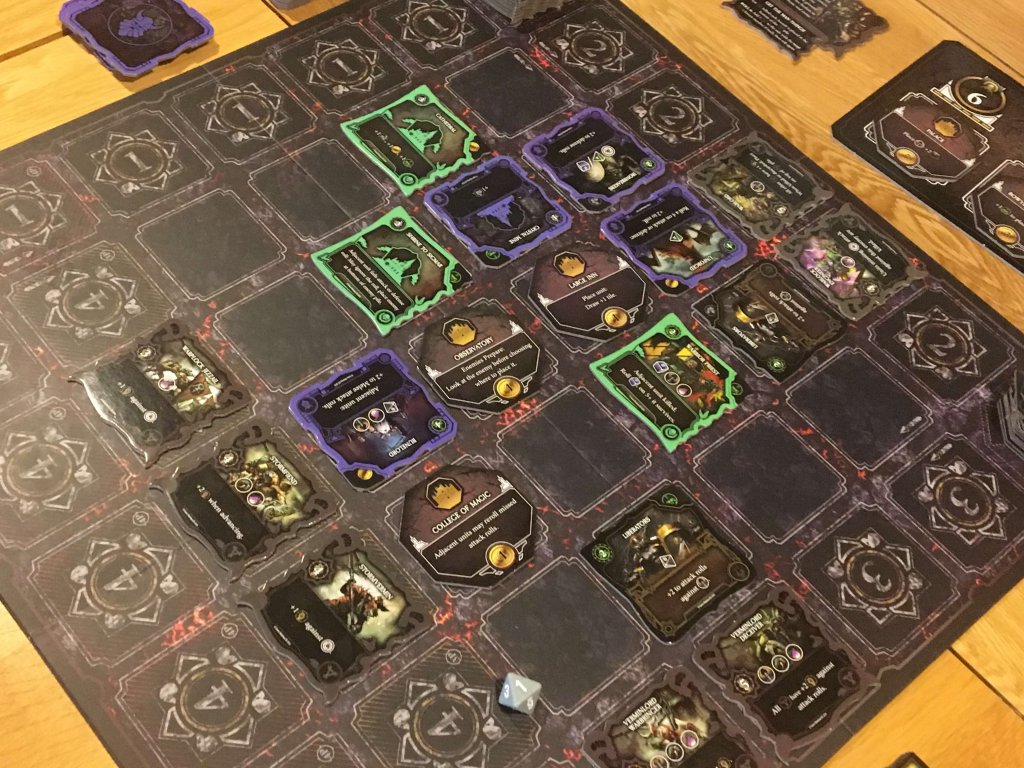
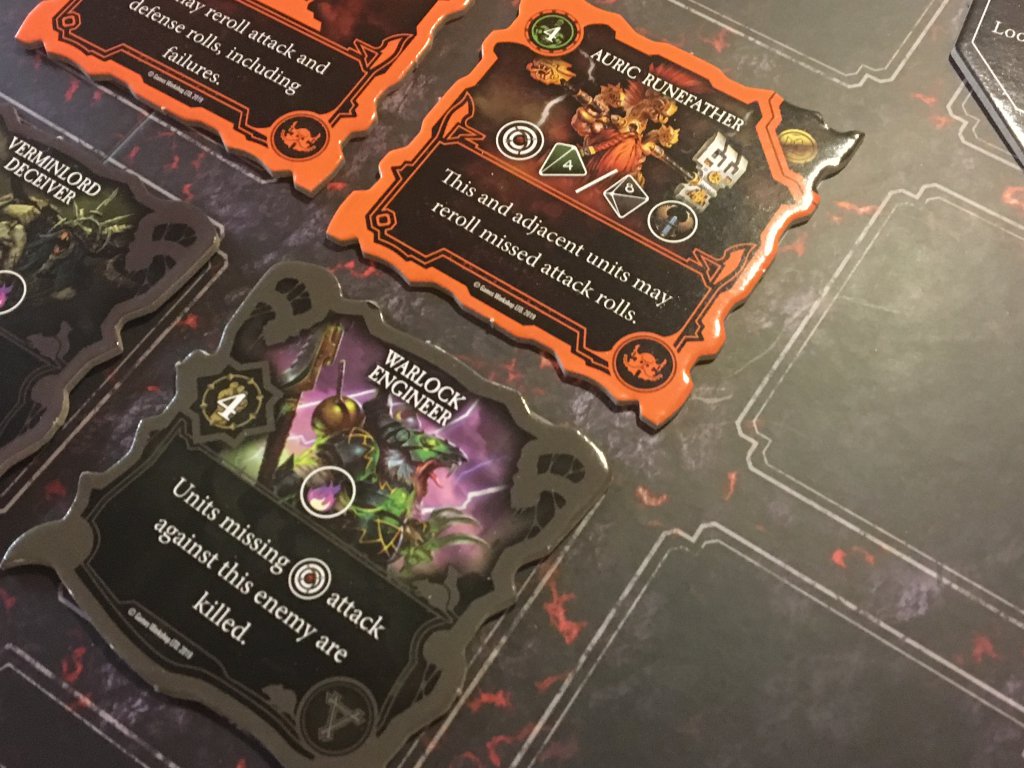
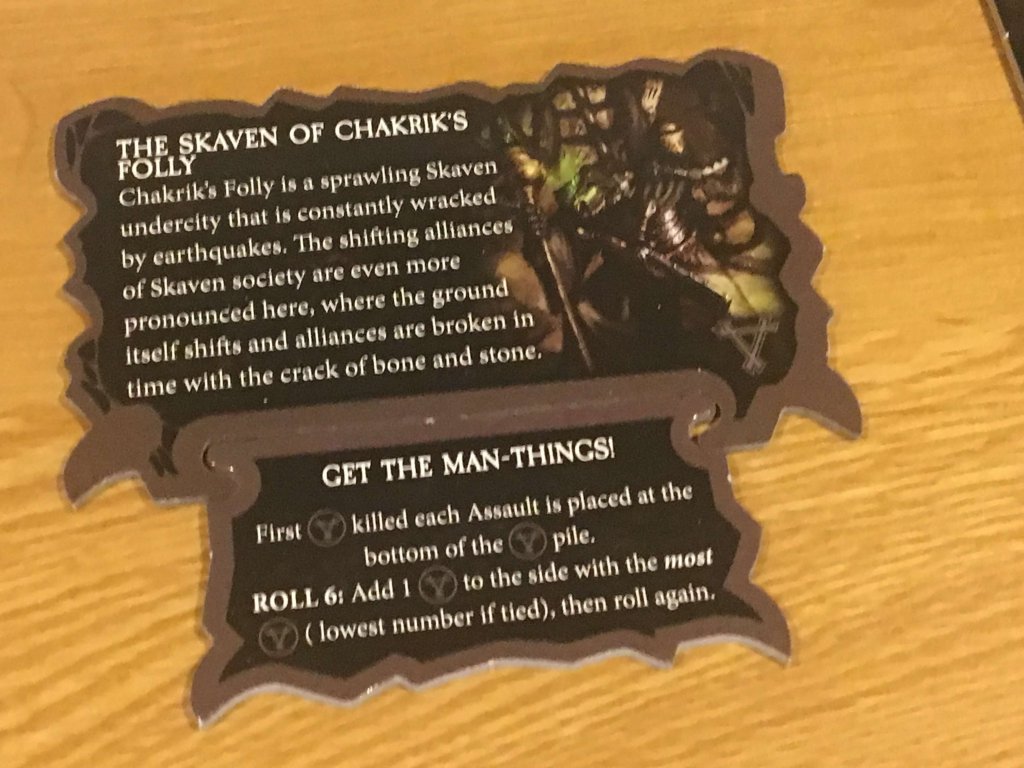
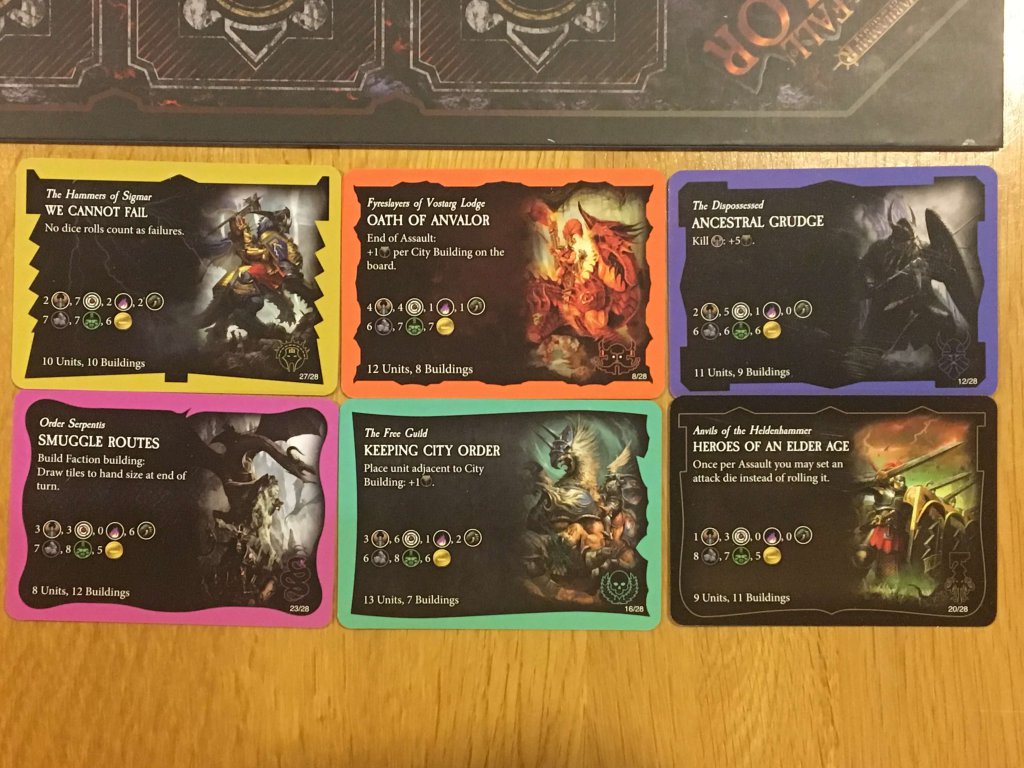
Comments are closed.